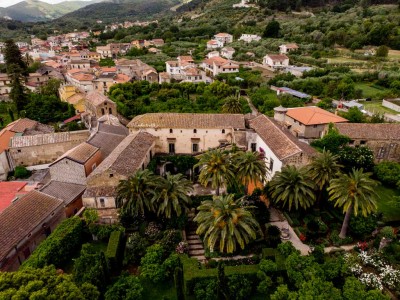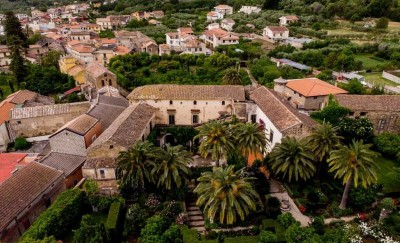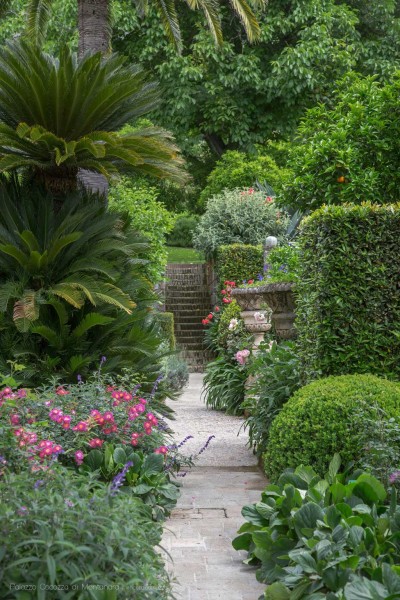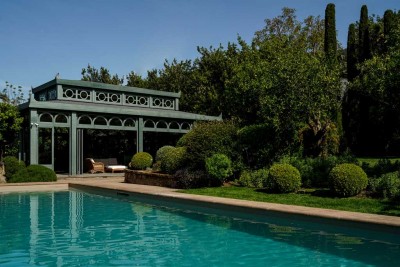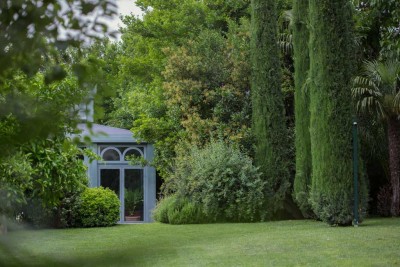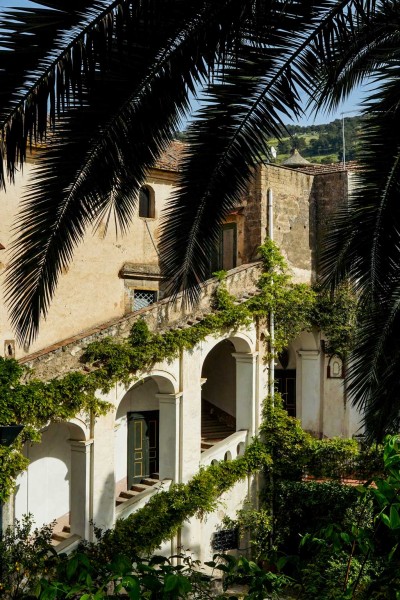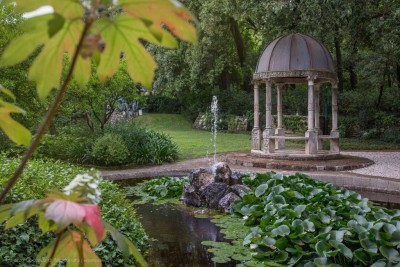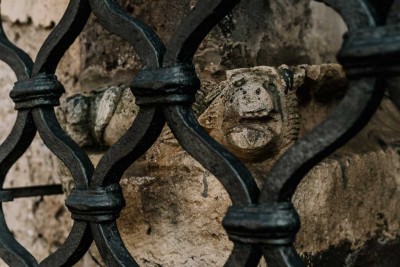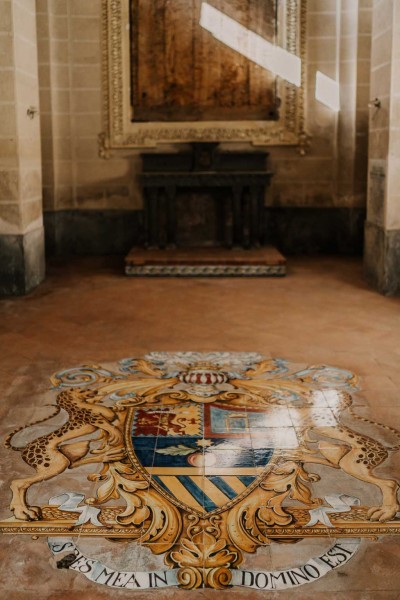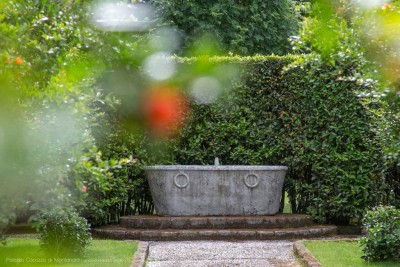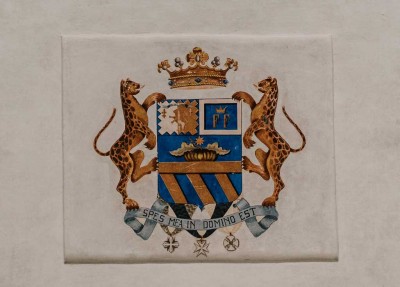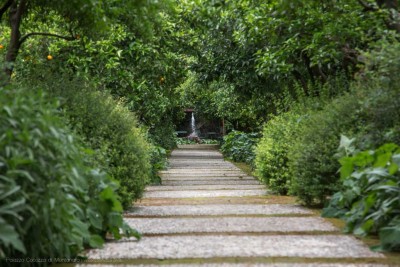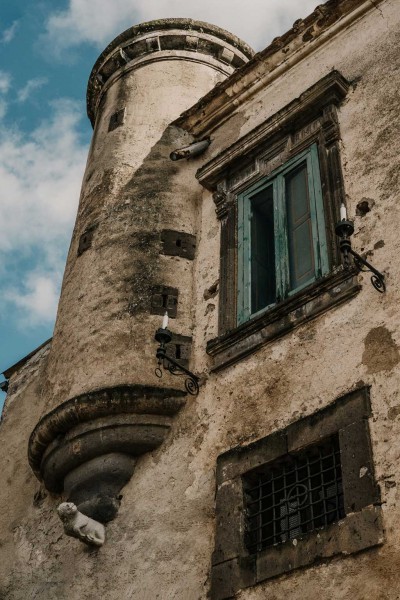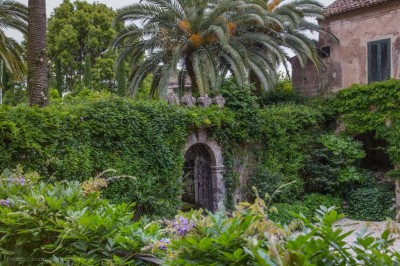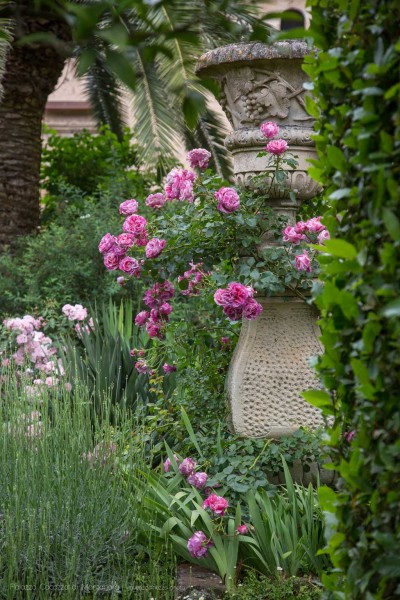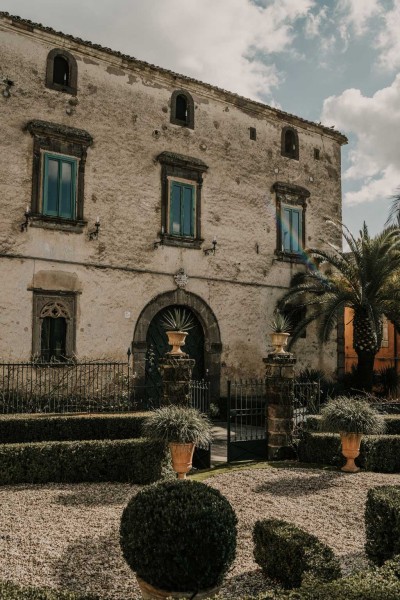Contact the abode
Palazzo Cocozza is a 15th-century historical residence with a magnificent garden measuring approximately 10,000 square metres. The architectural layout of the building dates back to the second half of the 15th century. Originally belonging to the family of the Counts of Ratta di Caserta, the Palazzo was transformed into a Guardhouse for defensive reasons, serving as an outpost for Casertavecchia. It later passed to the D'Amico family, then to the Tomasi dynasty, and through kinship ties, it was subsequently inherited by the Cocozza family.
Palazzo Cocozza is distirbuted over three levels and has a U-shaped layout, enclosing a central courtyard arranged in the style of an Italian garden. The principal façade, overlooking the main street of Casolla, is characterised by a large entrance portal in piperno stone on which the family coat of arms is placed (displaying the Cocozza crest and the letters "FF", representing ‘Fidelis Familia’). The cornice frames, also in piperno stone, help to date the façade, as this type of stone was used in the Casolla area and in Caserta until the 17th century, when it was replaced by split tuff and beige-coloured Bellona stone, which was also used in the construction of the Royal Palace of Caserta. Until the end of the 19th century, the openings on the façade were regular and had square shaped windows, which were modified by Marquise Cocozza when he had some of the windows replaced in the Neo-Catalan style.
The semi-circular tower is particularly noteworthy. It is an ancient watchtower, connected to the main façade, and at its base the sculpture of a stylised lion presumably taken from the portal of a Romanesque church can be seen. The family’s heraldic crests are still visible in the Palazzo’s atrium. The main entrance leads to the courtyard adjoining the garden.
The apartments, which were completely refurbished between the late 19th and early 20th centuries, are accessed via an 18th-century staircase with a perforated balustrade deriving from the San Felice style, similar in design, covering and cross vaults to other staircases of the same period. The courtyard is overlooked by three distinct wings which form the Palazzo’s characteristic U-shape. The central wing houses the State apartments, the wing facing Via Cupa a San Pietro ad Montes is almost entirely dedicated to work premises, and the third wing, which was partially demolished due to a fire in 1860 during a clash with Garibaldian-Piedmontese invaders, shows traces of an ancient ‘collèra’ building (used for the drying of animal glues produced from fats and sinews). It was possibly part of the original Palazzo complex and has long, narrow single lancet windows on which wooden rods were placed horizontally for drying purposes. The external walls are made of rough exposed bricks, typical of the structure of a collèra, in contrast to the rest of the Palazzo’s plastered walls.
The main body of the building covers three distinctive levels, with the main entrance at the same level as the courtyard, the ‘piano nobile’ floor containing a sequence of fine reception rooms with dual vistas onto Via Montanara and the garden, and an upper floor from which it is possible to admire Casertavecchia and Casolla, with Caserta further in the distance. The rooms on the main floor retain many original details, including sections of mixed terracotta and hand-painted majolica ceramic tile flooring. The upper section of the staircase is made of piperno stone, while some fixtures and cornices are composed of tuff stone and are not level with the floorings. From the courtyard, one enters into the second garden, arranged in the "romantic" style, proceeding through a striking portal which is likewise constructed using piperno stone and is surmounted by a crenellated merlon parapet in grey tuff stone. The garden is a veritable treasure trove in terms of its remarkable collection of botanical specimens. It houses Mediterranean and exotic species represented by centuries-old species. It also contains a pond and a series of sculptural elements evoking the classical world (a well, nine fountains, an obelisk, a circular Ionic temple). Of particular note are the trimmed boxwood hedges (Laurus nobilis and Quercus ilex), a collection of lavender plants (angustifolia, vera, dentata, etc.), as well as numerous species of roses, myrtle, and wisteria.
On the opposite side of the road, facing the Palazzo, is the Cocozza family's private chapel dedicated to San Rocco. The adjacent green area has a prolific orange grove and is dotted with Phoenix canariensis palms. Other species of palm trees (Phoenix roebelenii and Archontophoenix cunninghamiana) are housed in ‘caisse de Versailles’ planters in the cosy greenhouse, which is used as a winter garden. The current landscape design is the work of English architect Peter Curzon; the attribution of the original layout is controversial and the subject of scrutiny even today among garden specialists and historians. In 1969, Pier Paolo Pasolini chose the Palazzo as a setting for filming the novella "Riccardo and Caterina" from his film “Decameron”. Historical research attests that the Palazzo transitioned from a medieval fortress to a Renaissance villa, and subsequently to a country residence and place of rest after Marquise Cocozza had carried out some minor restoration work.
VISITING PALAZZO COCOZZA
Only the gardens of this historical residence can be visited by the public. Opening times Season 2023: from 16 April to 29 October, every Sunday.
Guided tours by appointment at 10:00, 11:00, 12:00.
For groups of more than 10 people, please contact the property.
For reservations and to book your tickets, tickets please visit the website:
www.grandigiardini.it/mobile/giardini-scheda.php?id=269
